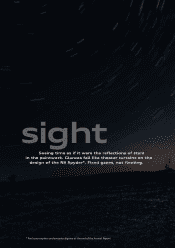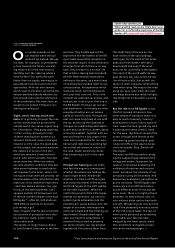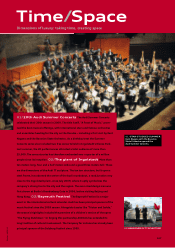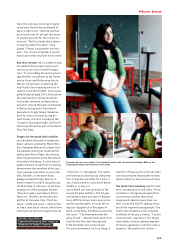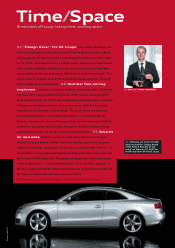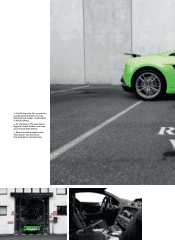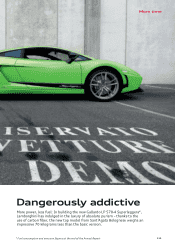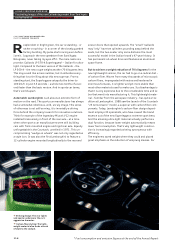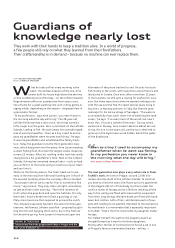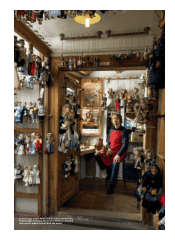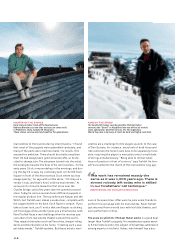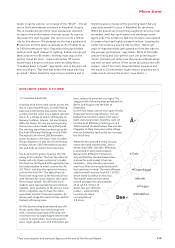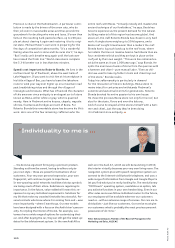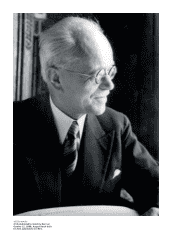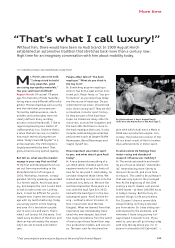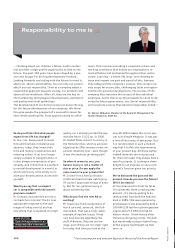Audi 2009 Annual Report Download - page 117
Download and view the complete annual report
Please find page 117 of the 2009 Audi annual report below. You can navigate through the pages in the report by either clicking on the pages listed below, or by using the keyword search tool below to find specific information within the annual report.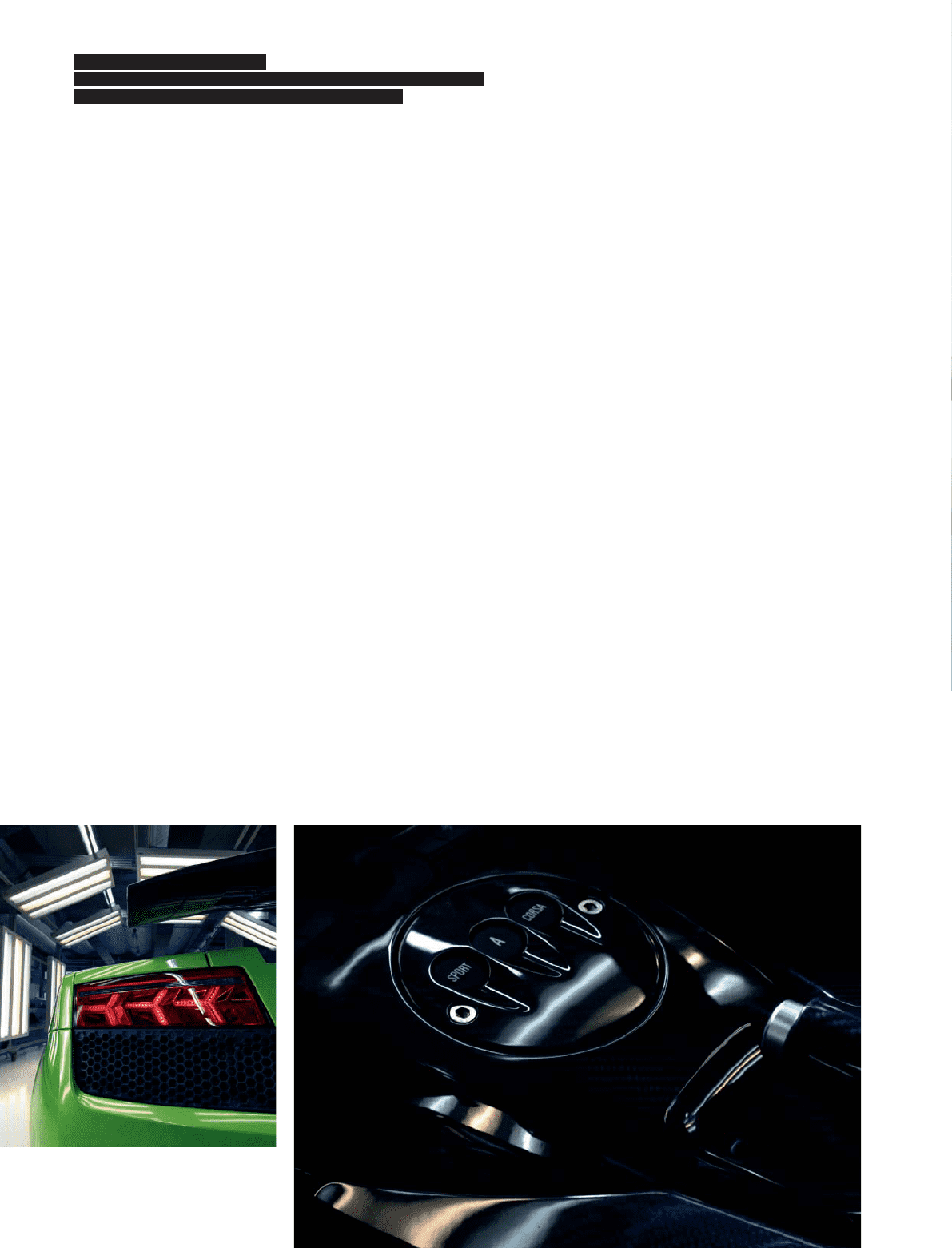
114
esplendent in bright green, the car is standing – or
rather crouching – in a corner of the closely guarded
factory building. My pulse starts racing even before
I see it. I approach the new speedster from Sant’Agata
Bolognese, never taking my eyes off it. The mere name is a
promise: Gallardo LP 570-4 Superleggera* – Italian for ultra-
light. Compared to the basic version of the Gallardo – the
LP 560-4 – the new coupe weighs another 70 kilograms less.
This may sound like a mere number, but it embodies every-
thing that is so thrilling about this new supercar. From a
standing start, the Superleggera catapults the driver to
100 km/h in just 3.5 seconds – a whole two tenths of a sec-
ond faster than the basic version. And in sports car terms,
that’s worlds apart.
Automobili Lamborghini is all about an extreme form of
motion on the road. The sports car manufacturer has always
had a somewhat rebellious, wild, unruly image. This sense
of otherness is not self-serving, it is invariably a driving
force behind the company’s search for innovative solutions.
Think for example of the legendary Miura’s V12 engine
installed transversely in front of the rear axle – at a time
when other sports car manufacturers were still building
cars with front-mounted engine and rigid rear axle. Equally
unforgettable is the Countach, unveiled in 1971. This un-
compromising “wedge on wheels” was not only regarded as
a style icon. It was also the first Lamborghini to feature a
12-cylinder engine mounted longitudinally to the rear and
R
COPY/MATTHIAS PFANNMÜLLER
PHOTOS/SJOERD TEN KATE
scissor doors that opened upwards. The “small” Gallardo
may “only” have ten cylinders pounding away behind the
seats, but the two-seater is by some distance the most
successful model in the Italian brand’s 47-year history. It
has permanent all-wheel drive and features an aluminum
space frame.
But to achieve a weight reduction of 70 kilograms for the
new lightweight version, the car had to go on a radical diet –
of carbon fiber. Woven from many thousands of microscopic
carbon fibers, impregnated with resins and hardened in
enormous furnaces, it is lighter and yet more stable than
most other materials used to make cars. Its disadvantage is
that it is very expensive due to the considerable time and la-
bor that went into manufacturing it. This lightweight mate-
rial – familiar from the aerospace industry – has quite a tra-
dition at Lamborghini. 1988 saw the launch of the Countach
“25 Anniversario” model, a supercar with carbon-fiber com-
ponents. Today, Lamborghini’s carbon-fiber design depart-
ment employs 30 specialists, who have coaxed the brand
essence out of the new Superleggera: extreme sportiness.
And the amazing ultra-light material actually performs a
dual function, because lower weight automatically means
lower fuel consumption. That’s why lightweight construc-
tion is increasingly regarded as being synonymous with
efficiency.
The engineers saved weight where they could and placed
great emphasis on the reduction of unsprung masses. For
Striking design: The rear lights
and spoiler underscore the car’s
aggressive character.
Carbon-fiber styling: The light-
weight material also lends a touch
of style to the cockpit.
A TRULY GRIPPING SUPERCAR
Fascinating images of the new Gallardo top model from Sant’Agata
can be found at: w
wwwww..aauuddii..ccoomm//aarr22000099//llaammbboorrgghhiinnii
* Fuel consumption and emission figures at the end of the Annual Report


